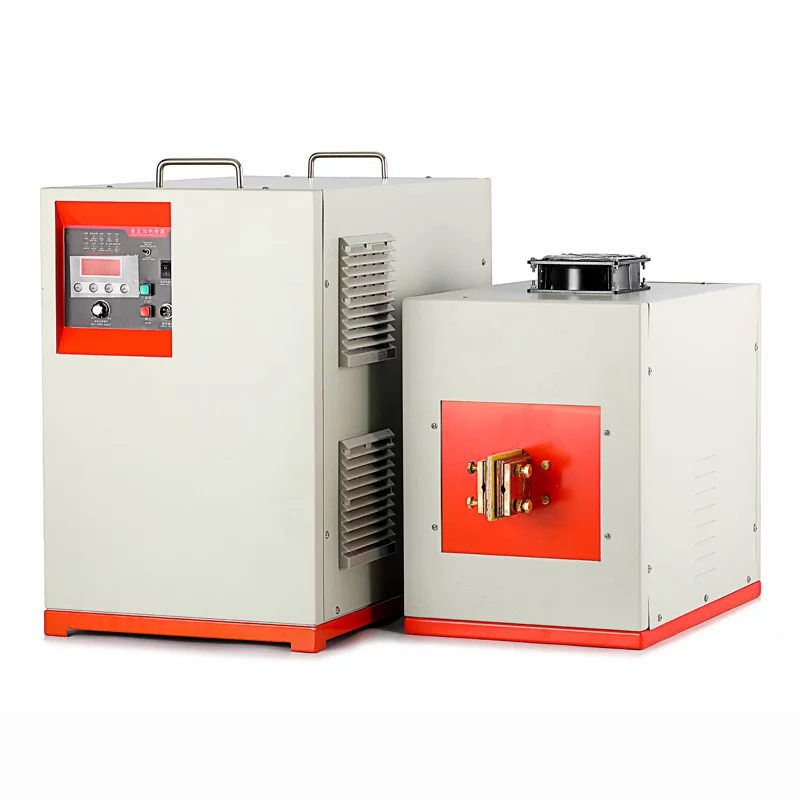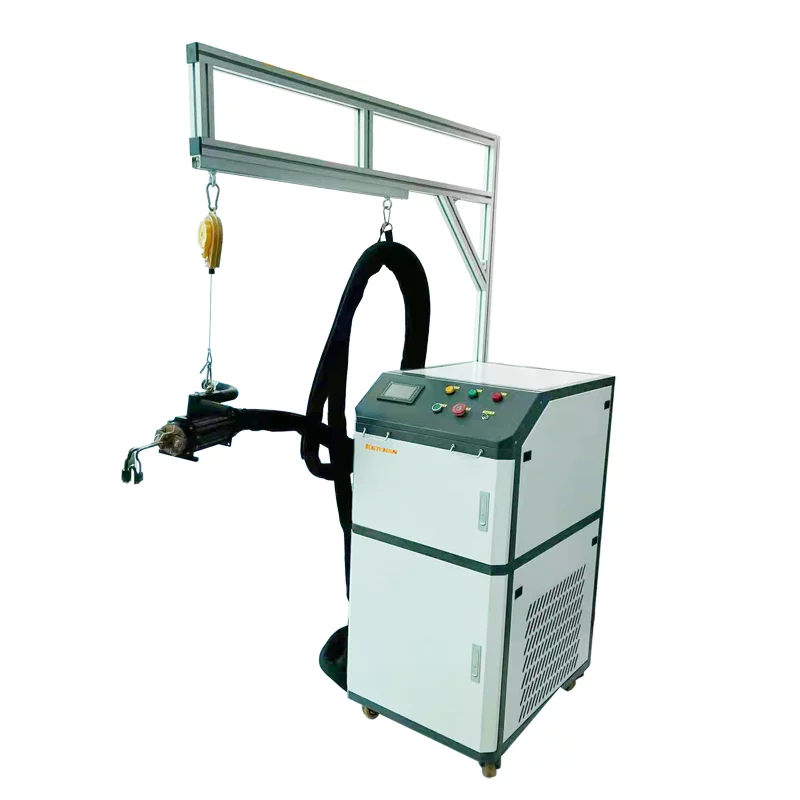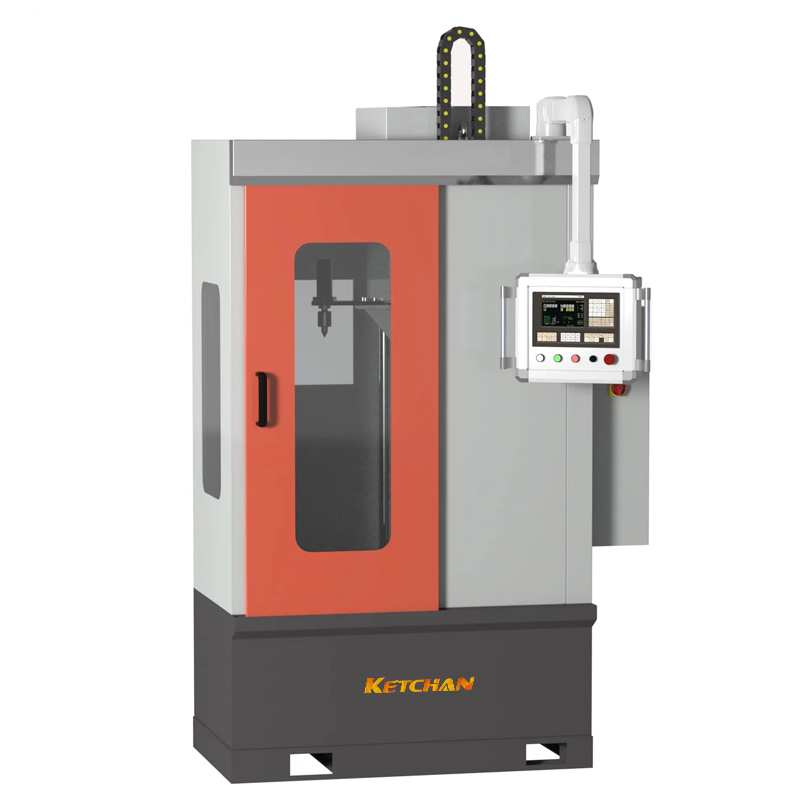It has become a trend to replace power frequency furnace and cupola furnace with intermediate frequency induction melting furnace, and it has opened a new way for the automobile manufacturing industry to produce high-quality castings. Is one of the basic pieces of automobile gearbox shell, it is the framework of multistage gear, not only to bearing, but also withstand when a lot of high strength bolts are tightened local large compressive stress, caused by the casting itself must have high pressure resistance, and corrosion resistance, so the casting must not have osteoporosis, coarse grains, and other defects, so as to avoid the lubrication and cooling effect of oil leakage. Traditionally, HT150 or HT200 castings are used as shell materials, and the casting quality cannot meet the requirements of the automobile industry to continuously improve the overall quality. This requires the addition of trace Cr, Mo, Cu, and other alloying elements to obtain the pearlite matrix-based high strength suitable for the use of the shell performance. In order to produce high strength and high quality cast iron automobile base parts, it is inevitable to use an intermediate frequency induction furnace when casting.In this paper, the quality control before the furnace is explored in the practice of using medium frequency furnace to make a casting of high strength cast iron automobile gearbox.
1.Design of the composition of high strength alloy grey cast iron
The transmission housing material is HT250, hardness < 200HBW, requiring free cutting, oil pressure test without leakage, adding trace multiple alloy components in cast iron, select reasonable process parameters, so that the casting has a certain chemical composition and cooling rate, to obtain the ideal metallographic structure and mechanical properties. To ensure the mechanical properties, the matrix structure and graphite morphology must be controlled well
In the design of high strength low alloying cast iron, the effect of liquid iron-carbon equivalent and cooling rate should be considered first. High carbon equivalent, the slow cooling speed at the thick wall of casting, coarse grain, and loose structure at the thick wall of casting and leakage in the oil pressure test. If the carbon equivalent is too low, hardpoints or local hard areas are easy to form at the thin wall of the casting, leading to poor cutting performance. By controlling the carbon equivalent to 3.95% ~ 4.05%, the mechanical properties of the material can be guaranteed and it is close to the eutectic point. The range of solidification temperature of the iron liquid is narrow, which creates conditions for the iron liquid to realize “low temperature” casting. It is also beneficial to remove the porosity and shrinkage defects of the castings.
Secondly, the role of alloying elements should be considered. During the eutectic transformation of chromium and copper, chromium hinders graphitization, promotes carbide, and promotes white mouth. Copper promotes graphitization and reduces cross-section whiteness. The interaction between the two elements can be neutralized to a certain extent to avoid the formation of cementite during eutectic transformation, which will lead to the formation of whiteness or increase of hardness at the thin wall of the casting. In the eutectoid transformation, both chromium and copper can stabilize and refine the composite of pearlite, but their functions are not the same. With the appropriate proportion of cooperation, can better play their respective role. When wCu < 2.0% was added to gray cast iron containing wCr = 0.2%, copper not only promoted pearlite transformation, improved and stabilized pearlite volume and refined pearlite, but also promoted a-type graphite production and homogeneous fossil ink morphology.Copper content can also be slightly increased, wCr > 0.2% gray cast iron fluidity, which is particularly beneficial to the thin-walled shell cast.The compactness of the casting can be further improved by adding chromium and copper. Adding a proper amount of chromium and copper is beneficial to improve the compactness of the material itself and improve its anti-leakage ability.
Pearlite is basically the desired structure in the production of high-strength gray cast iron, because only pearlitic based cast iron has high strength and good wear resistance. Tin can effectively increase the content of pearlite in the matrix, and promote and stabilize the formation of pearlite. The conclusion of our production practice is to control the content of tin at 0.7% ~ 0.09%.
2.Strictly control the quality of raw materials and auxiliary materials
Raw and auxiliary materials into the factory must be sampled and analyzed, so as to be aware of them. Unqualified raw and auxiliary materials should never be put into use. To ensure the workload of the original iron solution, must choose high carbon, low phosphorus, low sulfur, less than disturbance (pig iron suppliers should have trace element analysis report sheet) elements of pig iron; Pure medium carbon steel is selected, and trace elements such as Cr, Mo, Sn, V, Ti, Ni, Cu are selected according to the test results. Scrap steel that can stabilize pearlite is preferred. Pig iron and scrap steel must be derusted before they are allowed to be used. Those with oil stains must be baked at 250° C.
The ferroalloys and inoculants are also purchased at designated points to achieve stable composition and qualified lumpiness (particle size). Separate and stack to avoid moisture. Such a requirement avoids the defects caused by the “heritability” of cast iron burden.
Accurate measurement before use is the quality assurance of molten iron. It is particularly pointed out that for induction furnace melting, rigorous charge mixed with sealing vessels and explosive.
(1) Adhere to the combination of theoretical ingredients (ingredient calculation) and practical experience.No matter the trial algorithm or graphic method is adopted, the theoretical calculated batching data cannot be determined as the final ratio, and the changing law of elements in the melting process of intermediate frequency furnace should be mastered. If the furnace liner is an acidic material and the molten iron temperature is > 1500℃, the lower limit of Si addition can only be taken, but the carbon must be taken online.
(2) Master the chemical composition of various metal materials into the furnace and the law of burning and reduction of each element. Strict requirements are put forward on the classification, stacking, and numbering of returning-furnace iron (spout riser, scrap castings). Reduced elements in the furnace shall be subtracted when batching, and burned elements in the furnace shall be added when batching.
(3) The alloying elements should be mixed in one time, and the medium limit should be taken for other ingredients except for Si. The alloying elements (Mo, Cr, Cu, Sn, etc.) can be added after melting and scraping, and the loss is very little in the acid furnace.C and Si can be supplemented in slagging and gestation. As far as induction furnace melting casting is concerned, the principle of adding silicon after adding carbon is followed.
(4) To control the content of P and S, the P and S quantities are mainly from new pig iron. The P and S quantities can be controlled within the required range by selecting the burden. Therefore, wP < 0.06% and wS < 0.04% must be made of new pig iron so that the P and S quantities can be taken out of consideration when calculating the batching.(Due to technical requirements of casting: wP≤ 0.06%, wS≤ 0.04%).
(5) All the metal materials into the furnace are accurately measured in strict accordance with the requirements.
3.Control of intermediate frequency furnace melting
According to the metallurgical characteristics of an intermediate frequency electric furnace, a reasonable melting process should be worked out, and the charge should be from the base.Temperature control, the addition of alloy, carburizer, slagging agent, and the temperature of iron production at different temperatures are strictly controlled in order to control and stabilize the metallographic structure and improve the casting quality with the shortest melting time and the smallest alloy burning loss and oxidation.
In production practice, we divide the whole smelting process into three stages for temperature control. Here the so-called three-phase temperature refers to melting temperature, slag temperature, and iron temperature.
Melting temperature: the melting period before the sampling temperature determines the absorption of alloying elements and the balance of chemical composition. Therefore, it is necessary to avoid high-temperature melting and feeding and avoid “crust”.Otherwise, the molten iron will be in a boiling or high temperature state, the burning loss of carbon will be intensified, the reduction of silicon will be continuously enhanced, and the impurities will be increased due to iron liquid oxygenation. The melting temperature will be controlled below 1365℃ according to the process requirements, and the sampling temperature will be controlled below (1420±10) ℃. If the sampling temperature is low and the ferroalloy is not melted, the chemical composition of the sample will not be representative. If the temperature is too high and the alloy is burnt or reduced, the composition adjustment during the scouring period will be affected. If furnace power should be controlled after sampling. Before the furnace quality management instrument on the chemical composition of the results just entered the slag temperature.
Slag temperature: Slag temperature is an important link in determining the quality of molten iron because it is closely related to the stability of components and the effect of an inoculation treatment, and directly affects the control of iron temperature. Too high slag temperature aggravates the burning loss of the graphite nucleus of molten iron and the reduction of silicon, especially for the acid lining. Theoretically, if the molten iron contains too much silicon, it will have the effect of carbon emission, which will affect the crystallization according to temperature, and there is a tendency of anti-white mouth. If the temperature is too low, the iron solution will be exposed for a long time, and the carbon and silicon will be burned seriously. When the composition is adjusted again, it will not only prolong the melting time to make the iron liquid overheat, but also easily make the composition out of control, increase the supercooling degree of the iron liquid, and destroy the normal crystal.
Iron casting temperature: In order to ensure the best casting and breeding temperature, we generally control in 1520 ~ 1550℃.The high and low temperature of iron production will affect the crystallization and inoculation effect of cast iron. If the temperature is too high (above 30℃ as stipulated in the process), although the rapid analysis of C and Si in front of the furnace is also moderate, the white mouth depth of the casting triangle test piece will be too large or the hemp mouth will appear in the center. Appeared the situation even to take measures to increase furnace adding carbon inoculation quantity, the author’s practical experience is less effective, and after the lower intermediate frequency power, furnace cooling processing, namely into the furnace of the iron liquid amount 10% – 15% after baking new pig iron, try this clip mouth heart into grey cast mottled, the top white depth decreases. If the high temperature lasts for a long time, after the above method is adopted, the carbon filling measures in the furnace should still be implemented. The iron casting temperature is controlled according to the casting temperature. The suitable casting temperature of shell cast iron is (1440±20) ℃, which can realize the “high-temperature iron, suitable temperature casting”. Of course, it is best to strictly control and control. Because the iron production temperature is low, the casting temperature will be lower than 1380℃, which is not conducive to desulfurization and degassing and especially affects the inoculation treatment effect. With the decrease in temperature, problems such as cold isolation and unclear contour increase obviously.
4.Inoculation treatment of molten iron
To inoculation of production with HT250 gearbox shell, which improves the wear resistance of the material, to significantly improve the microstructure and mechanical properties of castings to significantly increase the hardness value of each section, but also in the aspect of the pearl on the stability of thick section dimension has the same effect, but also improve the wall thickness of sensitivity and good cutting performance in machining, casting castings of osteoporosis, especially to prevent the shell leakage has a special function.
The amount of inoculant is determined according to the wall thickness, chemical composition, casting temperature, and other factors of shell casting production. The principle is that no loose or leakage occurs at the wall thickness and no hard zone occurs at the wall thickness. The production practice shows that Sr, Ba, Ca and Si-FE are the most ideal inbreeding agents to improve the strength of gray cast iron. The inbreeding agent plays the role of the anti-decay ability of barium (Ba) and increasing the proportion of type A graphite, especially the strong ability of strontium (Sr) to eliminate white opening, auxiliary inbreeding, and osmotic effect of calcium (Ca) and silicon (Si). The inoculant of this kind of strength combination is an ideal choice for the inoculating treatment of high strength cast iron.
The relationship between the inoculation times and the inoculation effect, with the increase of inoculation times, the graphite distribution uniformity inside cast iron improved, the occupancy rate of type A graphite and graphite length was greatly different, the type A graphite inoculated more than twice had A high occupancy rate, uniform distribution and moderate length. More importantly, multiple inoculations increase the number of nonspontaneous crystal nuclei, strengthen the matrix, and thus improve and stabilize the strength of cast iron.
The key to controlling the inoculation effect is to prevent the inoculation of molten iron with flow lagging behind the pouring after the inoculation of barium ferrosilicon +75 ferrosilicon with funnel inoculation. The molten iron after inoculation treatment should be poured within a limited time, generally no more than 8min, and the inoculation effect of the second inoculation within 3 to 5min is the best. Silica-barium inbreeding agent can eliminate the white mouth of HT250, improve its graphite shape and distribution, and eliminate E and D supercooled graphite. Because E – type graphite and ferrite structure, the material density will be reduced, seriously deteriorated seepage resistance.
5.The effect of actual production
On the casting is produced without a white, its tensile strength more than HT250, test bar hardness up to 190 ~ 230 HBW, shell body anatomy, hardness is controlled in 190 HBW, significantly improve the quality of the casting coefficient, reached abroad shell casting microstructure, pearlite is 85% ~ 90%, meet the requirement of the strength of the gearbox shell, its mechanical performance reached the level of similar foreign models gearbox shell material.





